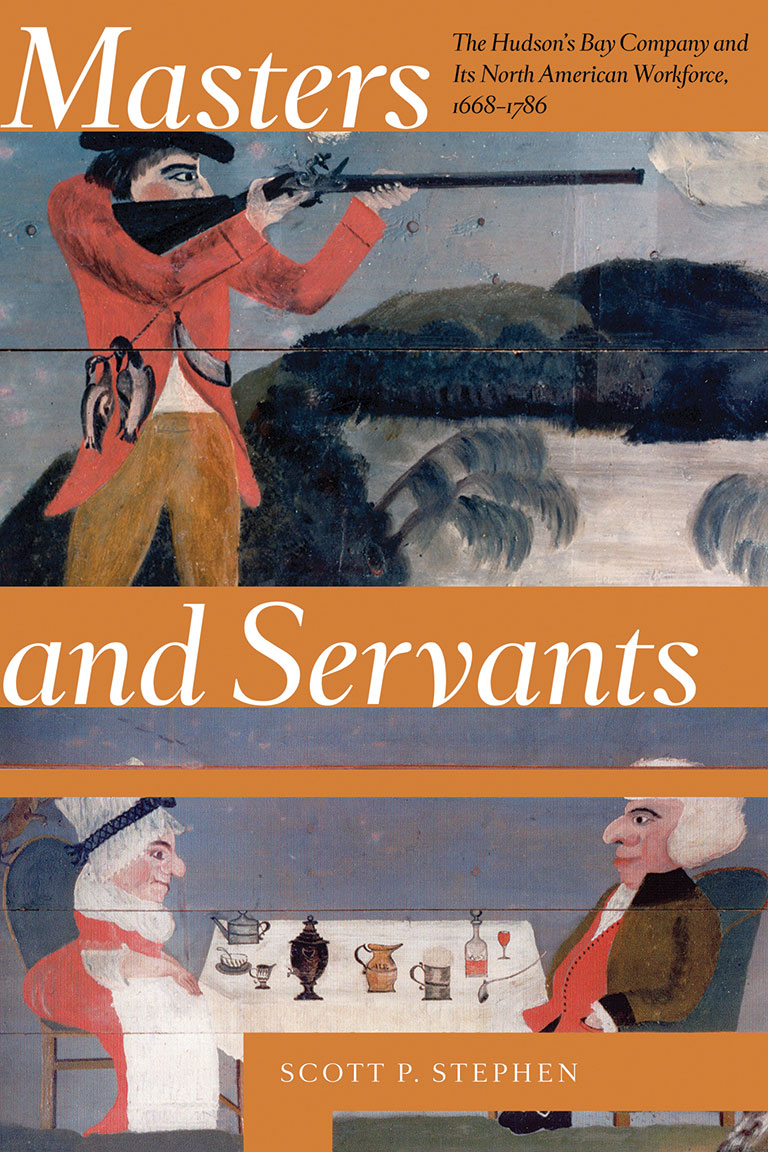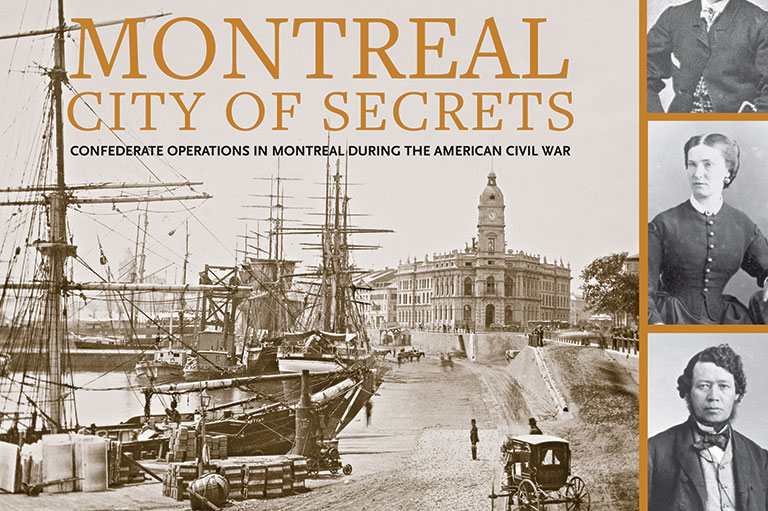Masters and Servants

Masters and Servants: The Hudson’s Bay Company and Its North American Workforce, 1668–1786
by Scott P. Stephen
University of Alberta Press,
448 pages, $44.99
In Masters and Servants, Parks Canada historian Scott Stephen examines how the Hudson’s Bay Company constructed its labour force during the firm’s “long first century,” when the HBC largely consisted of a handful of modest bayside posts on the eastern rim of the vast area known as Rupert’s Land that had been granted to the company as its exclusive trading domain.
In its early decades, the HBC took its servants where it could find them, and recruitment remained improvisational even after the 1713 Treaty of Utrecht between Britain and France had initiated a period of relative stability. HBC eventually found a reliable supply of able (and cheap) labour in the Orkney Islands, the last port of call before company ships crossed the Atlantic. Standard five-year contracts with a sliding salary became the norm. The hiring of French Canadians was generally avoided, while Charles Price Isham was a rare case of the son of an HBC employee and an Indigenous mother who had a significant career in the firm.
HBC posts were really an extension of early modern Britain, Stephen argues, and are best understood as microcosms of that strictly hierarchical society. On Hudson Bay, as in Britain, the dominant mode of economic and social organization was the household, which bonded all of its members under a patriarchal and paternalistic regime of masters and servants. This thesis is especially convincing when we compare the trading posts to larger British estates. One can easily substitute the HBC committee for the estate owner, the post factor for the estate steward, and the labourers for the body of servants.
Stephen is a master of the vast documentary resources found in the Hudson’s Bay Company Archives, and he makes rich use of this material to make his point. What is especially striking is how evaluations of workers were usually based on their attitudes and behaviours, rather than on any tangible skills. Labourers were described as good, sober, faithful, diligent, able, and useful on the one hand, or lazy, dissolute, profane, troublesome, or disobedient on the other. This reflects the fact that the master-servant relationship was based primarily on a personal bond of trust, what Stephen terms “social and moral covenants.” While correspondence was couched in ritualized, deferential terms — “your honours most faithful servant” was a typical send-off — this ostentatious diction could mask true attitudes and mediate stronger emotions.
The two greatest threats to the HBC household model were private trade and relationships with Indigenous women, both of which tended to place the individual labourer outside the community and which were officially banned for most of this period. Interestingly, factors were generally exempt from the latter restriction, since the Cree expected that trading relationships would be confirmed through the establishment of kin connections.
Stephen preserves the original spelling and punctuation of HBC documents, which brings us one step closer to the workers of the Bay, but we still remain distant from the actual lived experiences of these men. Despite the sheer volume of records, HBC’s labourers left little in the way of personal testimony, and their lives are refracted through official correspondence and reports. Stephen includes a few evocative images created by some workers — paintings on boards found at York Factory and graffiti carved on the rocks at Sloop’s Cove near Fort Prince of Wales, both in what is now northern Manitoba — but the inner lives of these workers are stubbornly beyond our grasp.
Stephen wisely concludes his study with HBC’s establishment of its first inland department. The nature of the firm changed as the company moved into the interior, with the emerging need for bush skills such as canoe building, the expansion of trade, a deeper engagement with the Indigenous inhabitants of the land, and the HBC facing its Montreal-based competitors from the North West Company.
Themes associated with this article
Advertisement




